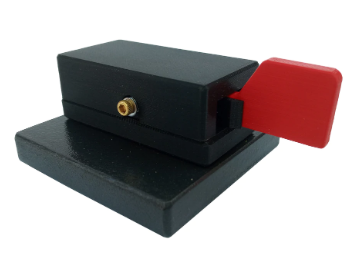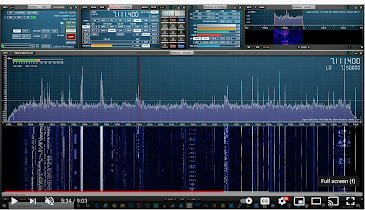Unleashing Morse Code - SKCC # 25995
I've recently committed to learn how to use a "straight key" when sending CW. Except for contests I will refrain from using the electronic keyer on my radio, or the cw keyboard, or built in memory macros to send CW.
These are generally accepted tools for contesting, and every contester that I know of uses them, but they are preventing me from "overlearning" CW as I really want to do.
Last week I joined the Straight Key Century Club and was given lifetime member number 25995. The 599 tie in is beautiful, and completely a CW coincidence! As of today the latest new member is 26013. What a difference a week makes.
The straight key relies on the operator to form the dits and dahs and the timing between letters and words. As a result no two operators sound exactly alike, and each operator develops their own "accent" which can be recognized as the sound of their fist. Impressive.
CW Morse Camelback Straight Key. This is a great little key, 3D-Printed and manufactured in Texas. This style is the original "straight key" design and what comes to mind when most people think of sending morse code.
https://cwmorse.us/products/camel-back-straight-key
CW Morse Pocket Single Paddle Cootie Key With Magnets. This is my second key from CW Morse.
https://cwmorse.us/products/pocket-single-paddle-cootie-key-with-magnets
I've found that the sideswiper, or cootie key, is actually a lot of fun to use. You can feel and hear the rhythm at the same time, unlike the iambic mode where the electronic keyer automatically forms dits and dahs and alternate if you send use the "squeeze" method. Sending with a cootie key is a brand new mechanic but feels better to my brain.
I've also confirmed with SKCC board that you can rig any paddle to work as a cootie (double or single paddle) by plugging it straight into the KEY jack and disabling the radio's electronic keyer. You can also use a jumper across the dot and dah to "wire" the paddle to function as a cootie. Both are acceptable and in keeping with the spirit of SKCC, which means I can use my Begali Pearl as a sideswiper at home.
Finally, I purchased this stainless steel key with magnets in the base and rigged it as a portable cootie key.
https://www.amazon.com/gp/product/B09KC3JYC8/







Comments